What is Fat?
Fat is a wide range of compounds found in mammals. Fat can be either a liquid or a solid at room temperature and is oily, not mixing with water. Chemically, fats are triglycerides, triesters of glycerol and any of several fatty acids. In animals fat is also know as adipose tissue.
Why do we need fat?
Mammals use fat in their bodies to store energy for extended periods of time. The location of fat on the body determines its metabolic profile. Viseral fat is around the stomach wall beneath the abdominal muscles. Viseral fat produces “signaling chemicals” or hormones which include inflammatory tissue responses. Subcutaneous fat is located under the skin and above the muscles.
Fat in animals, including humans, is a necessary part of our life. Fats not only act as a storage and delivery device for fatty acids, glycerol, the hormones, insulin, glucagon and epinephrine, but store and release energy (glucose) into our blood stream when needed as other energy sources have been depleted. Glycerol is stored in the fat by the body and is converted to glucose by the liver when needed. Fat has 9 calories of energy per gram as opposed to protein and carbohydrates that have only 4.
Some vitamins, such as A, D, E and K are fat-soluble vitamins. They can only be used by the body in conjuction with lipids/fat. These vitamins can be stored by the body for longer periods of time in the fat tissue as opposed to water-soluble vitamins like C and B which need to be replaced daily because they are secreted in our sweat and urine.
Fat also plays an important part in having healthy skin and hair as well as aiding in cell production and maintaining our body temperature. Amazingly, fat also protects us from chemical or biotic substances, like diseases, that enter our body. When an over load occurs that the liver and kidneys can’t handle, the body stores the offending substances in the body’s new fat tissue. The body then disposes of the offender through hair growth, excretion, urination and bloodletting. That is why some drugs, or toxic chemicals we ingest or breath can be detected in our hair, fat and bone marrow for months or even years after they enter the body.
The good fats and why
Monounsaturated fat
Where are monounsaturated fats found?
Olives, ground nut oil, and avocados.
Polyunsaturated fat
There are a number of spaces around each polyunsaturated fat molecule – they are not saturated with hydrogen atoms. Nutritionists say polyunsaturated fat is good for our health, especially those from fish which contain Omega-3 polyunsaturated fatty acids. Omega-3 polyunsaturated fatty acids protect us from heart disease as they lower blood cholesterol levels. Professionals say Omega-3 polyunsaturated fatty acids may also help reduce the symptoms experienced by people who suffer from arthritis, joint problems in general, and some skin diseases.
Where are Polyunsaturated fats found?
Oily fish (sardines, mackerel, trout, salmon and herring), safflower oil, grapeseed oil, and sunflower oil.
The bad fats and why
Saturated and unsaturated fats differ in their energy content and melting point. Unsaturated fat contains fewer carbon-hydrogen bonds than a saturated fat with the same number of carbon atoms, unsaturated fats yield slightly less energy during metabolism than saturated fats with the same number of carbon atoms. Saturated fats can stack themselves in a closely packed arrangement, so they can freeze easily and are usually solid at room temperature. Lard is high in saturated fatty acid content and is solid at room temperature. Olive and linseed oils are highly unsaturated and are liquid at room temp.
Trans fats
Most trans-isomer fats ( know as trans fats) are synthetically made. Trans fatty acids are rare in nature. An industrial process adds hydrogen to liquid vegetable oils to make them more solid. They are also known as partially hydrogentated oils.. Trans fats may still stack like saturated fats, and are not as susceptible to metabolization as other fats. Trans fats may significantly increase the risk of coronary heart disease. Interestingly, trans fats can either be monounsaturated or polyunsaturated like our good fats, but they are never saturated. Trans fats have fewer hydrogen atoms than saturated fats. Consuming trans fats increases your LDL cholesterol level (bad cholesterol) and lowers levels of HDL cholesterol (good cholesterol), which raises your risk of developing heart disease and stroke.
Like other things like HFCS, Trans fats have become popular because food companies find them easy to use and cheap to produce. They also last a long time and can give food a nice taste. As trans fats can be used many times in commercial friers they are commonly used in fast food outlets and restaurants.
Where are trans fats commonly found?
- Fried foods, such as French fries
- Doughnuts
- Pies, pastries, biscuits, pizza dough, cookies, crackers, stick margarines, shortenings, and many other baked foods
If the nutritional labeling includes partially hydrogenated oils, it means that food has trans fats. The American Heart Association says your consumption of trans fats should not exceed 1% of your total calorie intake.
Saturated fat
Saturated fats are totally saturated, meaning that each molecule of fat is covered in hydrogen atoms. Nutritionists say saturated fats increase health risks if you consume too much over a long period of time. A large intake of saturated fats will eventually raise cholesterol levels, which can lead to cardiovascular disease and possibly stroke.
Where is saturated fat found?
The largest amounts of saturated fats can be found in meat (mammals), meat products, the skin of poultry, dairy products, many processed foods such as cakes, biscuits, pastries and crisps, as well as coconut oil.
The best “fatty” foods
Nuts and Seeds
Avocado
The avocado is rich in monounsaturated fats, which may be associated with a reduced risk of heart disease, reports HelpGuide.org. Avocado can be eaten raw or it can be used as a condiment on sandwiches or Tex-Mex style dishes, added to salads or even as an ingredient in smoothies. You can also include avocado oil in your diet and it works well in high heat situations.
Olives and Olive Oil
Olive oil is the ideal cooking fat. Olive oil is a monounsaturatured fat and a key ingredient in healthful Mediterranean style diets. Replace animal fats, margarine, or tropical oils with olive oil. Choose extra virgin olive oil to retain all of the health benefits of olive oil, or a more refined version for higher heat cooking.
Fatty Fish
Fatty cold water fish like salmon and herring are great sources of Omega-3 fatty acids. These essential fatty acids may have a positive effect on cardiovascular disease and other health issues, according to Helpguide.org. While there is some concern about mercury contamination, include at least two servings of fatty fish in your diet each week or consider a fish oil supplement if advised by your physician.
The worse “fatty” foods
The following is straight from 10 Surprising Foods That contain Trans fat
#1: Breakfast Cereals
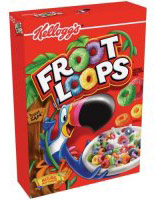
Here’s one that will come as no surprise to anyone who has seen the Breakfast Cereal Comparison. Of the 50 popular brand name cereals I looked at, 12 contained trans fat. In no specific order, they are:
- Fruity Pebbles (Post)
- Cocoa Pebbles (Post)
- Basic 4 (General Mills)
- Rice Krispies Treats Cereal (Kellogg’s)
- Froot Loops (Kellogg’s)
- Oreo O’s (Post)
- Corn Pops (Kellogg’s)
- Honey Smacks (Kellogg’s)
- Smorz (Kellogg’s)
- Eggo Cereal Maple Syrup (Kellogg’s)
- Mini-Swirlz Cinnamon Bun (Kellogg’s)
- Waffle Crisp (Post)
#2: Quaker Oats Chewy Granola Bars
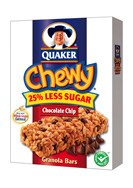
Most people would see the brand “Quaker” and/or the term “granola bar” and think “healthy.” They certainly wouldn’t think “trans fat.” Well, they’d be wrong. That wholesome Quaker brand isn’t quite so wholesome after all. Their ads implore parents to give these things to their kids as a good quality, healthy snack. Unfortunately, these granola bars contain some amount of trans fat per serving.
These are also one of the many products that go the extra mile to include “0g Trans Fat” right on the front of the package for added emphasis. On the bright side, I’ve been told that there is a tiny asterisk next to this with an even tinier note that basically says “Oh, and by the way, this product actually does contain a small amount of trans fat in each serving.” How family friendly of them.
#3: Saltine Crackers
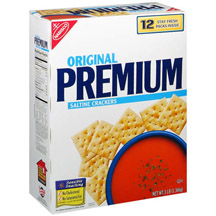
Also called soda crackers, saltine crackers don’t exactly scream trans fat based on the fact that they are, you know, plain, boring, tasteless, white crackers. This apparently doesn’t matter. I haven’t investigated every saltine cracker ever created, but the most popular brands, such as Nabisco’s Premium Crackers and Keebler’s Zesta Saltine Crackers, do indeed contain some amount of trans fat.
This would lead me to assume that there’s a good chance many other brands of these crackers probably do as well.
#4: Special K’s entire line of health/weight loss food.
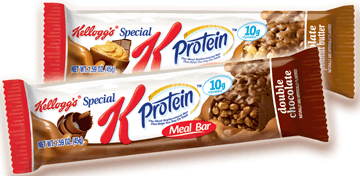
Are you familiar with the brand Special K? You know… they make that typical, useless, empty calorie Special K cereal which they hilariously market as a weight loss product? If so, then you are probably also familiar with the other products they released over the last few years which they also try to sell under the guise of being health/weight loss food (which none of them even remotely are).
Well, here’s a little fun fact for you. Special K’s entire line of these foods all contain some amount of trans fat per serving. Specifically, this includes all types and flavors of their:
- Protein Snack Bars
- Protein Meal Bars
- Bliss Bars
- Cereal Bars
- Snack Bites
For those interested, while their newer Chocolatey Delight cereal does indeed contain trans fat as well, their original plain old cereal does NOT. It just contains empty calories — sorry — I meant to say “weight loss magic.” My mistake.
#5: Girl Scout Cookies
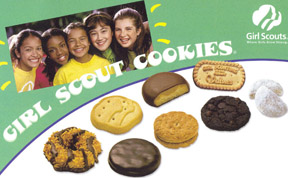
I thought these would be considered “surprising” for 2 reasons. First, they are girl scout cookies. Why on earth would the girl scouts be trying to kill us? Seriously… they’re girl scouts. You’d think these would be completely safe and friendly and truly contain 0 grams of trans fat. And, you’d think wrong.
The second and more important reason these are on this list is that a couple of years ago, the girl scouts made a big deal over the fact that their cookies were going “trans fat free.” I guess at some point girl scout cookies contained a fairly large amount of trans fat, so much so that they felt it necessary to both remove it and then go out of their way to mention that they were removing it. The teeny tiny problem with this removal is the fact that girl scout cookies still contain some amount of trans fat per serving.
I guess they have to get their “Raise A Stranger’s Cholesterol” badge somehow.
#6: Popcorn

We know snack foods are a common source of trans fat. Potato chips? Sure. Cheese curls/balls/puffs/doodles? Of course. But popcorn too? Well, depending on the brand… yup.
I haven’t looked at every popcorn brand on the planet, but, as far as microwavable popcorn goes, every single type from the brand Pop Secret contains trans fat (in some cases up to 6 grams per serving). As far as regular, ready-to-eat popcorn goes, several types from the brandsHerr’s and Frito-Lay also contain some amount of trans fat per serving, some of which were the “light,” no butter versions.
A bunch of other brands didn’t, but the ones mentioned above did, which leads me to believe at least a few others do as well.
#7: Animal Crackers
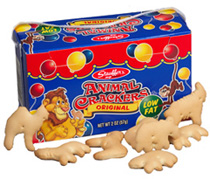
As if barely looking like actual animals in the first place wasn’t bad enough, it turns out the 2 most popular brands of animal crackers that I know of, Barnum’s Animal Crackers (by Nabisco) and Stauffer’s Original Animal Crackers, both contain some amount of trans fat per serving.
See kids, animals can be dangerous.
#8: Fig Newtons

If there was ever to be some at least moderately healthy cookie, you’d think the Fig Newton would be that cookie. I mean… it’s a cookie… whose main ingredient is fig. Not chocolate or vanilla filling… but fig. And Nabisco certainly hasn’t been shy about that fact. Five seconds of research has reminded me that they’ve claimed a fig newton contains more fruit than a nutri-grain bar and that it’s “the cookie that thinks it’s a fruit.”
That sounds great and all, but I’d sure like to know what fruit it thinks it is because, last time I checked, no fruit contained trans fat. Fig Newtons on the other hand, do. On the bright side though, their Fat Free Fig Newton honestly does NOT contain any trans fat.
Hopefully someone will inform Brian Regan.
#9: Ritz Crackers
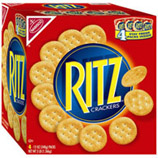
Sure, these might not be quite as surprising as saltine crackers (as these actually have a taste), but even still, some may find it surprising that Ritz Crackers contain some amount of trans fat per serving. And yeah, even the reduced fat version and the whole wheat version of Ritz Crackers do as well.
Mmmmm, forget the cheese. Let’s put some Lipitor on those Ritz.
#10: Fortune Cookies

I figured I’d end on a weird one. I first discovered that fortune cookies contain trans fat when one of my fortunes said “Your risk of heart disease will be increasing.” Thank you, I’ll be here all week.
Seriously though, I found this out one time while waiting to pick up an order at my local Chinese food place. I happened to see a big bag of fortune cookies sitting nearby. And, wouldn’t you know, they contained trans fat. Since then I’ve actually seen fortune cookies from 2 other restaurants, and they too contained trans fat. Whether or not the Chinese food joint near you uses fortune cookies that do, I don’t know. However, I’d say the chances are pretty good.
Eggs are full of protein and other important nutrients. Those with cholesterol issues may want to avoid dietary cholesterol found in eggs. (ALEX GARCIA/Chicago Tribune)
Quick, name the good fats (and their sources) from the following: monounsaturated, saturated, polyunsaturated, trans.
If you can’t answer right away, don’t worry. You have a lot of company.
According to recent polls, many Americans are dropping low-fat diets for “healthy fat” diets, but only about a third of us can correctly differentiate between so-called good and bad fats.
(By the way, the answers: Polyunsaturated and monounsaturated are good fats, and sources include olive oil, avocados and oily fish.)
But maybe this isn’t so surprising, given the flip-floppy advice the nutrition establishment has issued on fats and cholesterol over the years. Remember when avocados and eggs were considered fatty no-nos, while margarine was seen as a healthful alternative? How times have changed
Conclusion
My conclusion is to avoid trans fat and partially hydrogenized vegetable oil like the plague. Try to limit intake of saturated fats which mostly come from animal sources and to eat mostly mono or polyunsaturated fats found in vegetables and vegetable oils such as olive oil. For an interesting counter point go to Fat: Infiltrating the Culinary World posted by Melisa – Jug

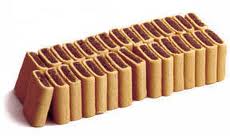
2 comments
The tricky way they hide bad stuff in our food! I spend most of my time at the grocery store with magnifying glasses reading labels. I’m sure I look quite eccentric.
Try this link, with out the s on the http – http://jughandlesfatfarm.com/blog/2011/11/10/fat-the-good-and-the-bad/